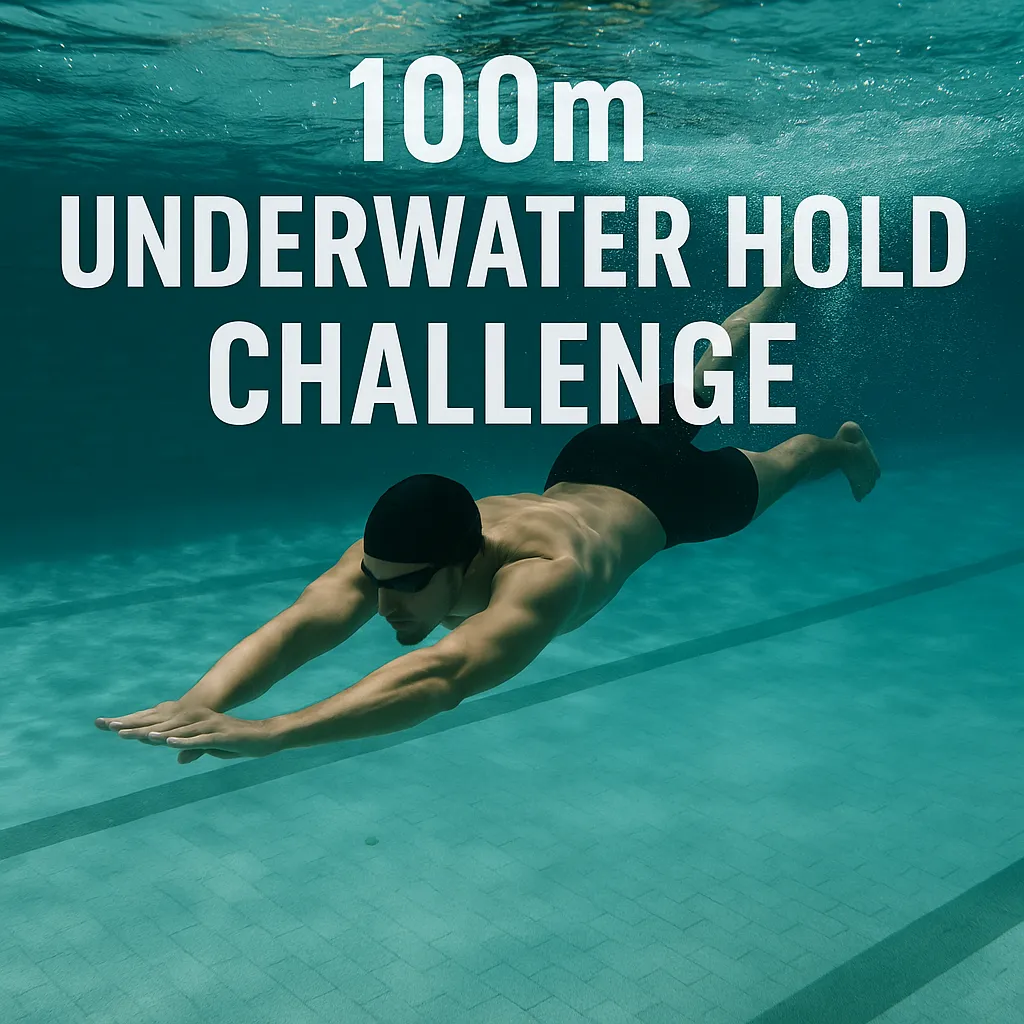Introduction to Zone 2 Cardio
Zone 2 cardio refers to a specific heart rate training zone that typically ranges from 60% to 70% of an individual’s maximum heart rate. This range is recognized as an optimal zone for enhancing aerobic capacity and promoting fat oxidation. Physiologically, training in Zone 2 facilitates the body’s ability to efficiently use fat as a primary fuel source, making it a pivotal component of any comprehensive fitness regimen. Athletes and fitness enthusiasts often utilize this zone to build endurance and improve overall cardiovascular health.
The importance of Zone 2 cardio lies in its unique ability to strike a balance between intensity and sustainability. Unlike higher training zones, which may lead to fatigue and burnout, Zone 2 allows individuals to engage in prolonged exercise durations without undue strain. During this moderate-intensity training, the body can effectively clear lactate and maintain optimal energy levels, resulting in enhanced performance over time.
When comparing Zone 2 to other training zones, the effects on body composition and overall fitness become evident. For instance, while Zone 1 is focused on recovery and low-intensity activity, and Zone 3 or higher engages anaerobic pathways for quick bursts of energy, Zone 2 specifically targets fat burning and conditioning the cardiovascular system. This targeted approach not only aids in weight management but also promotes heart health by increasing stroke volume and enhancing oxygen delivery throughout the body.
In essence, integrating Zone 2 cardio into a training routine supports longevity in exercise while fostering a healthier metabolism. Emphasizing the physiological benefits of this training zone is crucial for understanding how it contributes to effective fat loss and improved endurance, setting the stage for further exploration of its application in achieving fitness goals.
Understanding Fat Oxidation and Energy Systems
Fat oxidation is a fundamental biological process that supplies energy during various forms of physical activity. The human body utilizes different energy systems, primarily distinguished by the duration and intensity of exercise. During low to moderate intensity workouts, such as Zone 2 cardio, fat becomes a principal fuel source. Zone 2 training typically corresponds to an aerobic heart rate zone where exercise can be sustained for extended periods, allowing the body to efficiently oxidize fat for energy.
At the cellular level, fat oxidation occurs within the mitochondria, the powerhouse of the cell. When engaging in Zone 2 cardio, the body mobilizes triglycerides stored in adipose tissue and converts them into free fatty acids. These free fatty acids are then transported into the mitochondria where they undergo beta-oxidation, a key metabolic pathway responsible for breaking down fatty acids into acetyl-CoA. This compound then enters the Krebs cycle, ultimately producing adenosine triphosphate (ATP), the energy currency of the cell.
One of the key advantages of relying on fat as a fuel source during exercise is the preservation of glycogen stores. Glycogen, stored in the liver and muscles, serves as a short-term energy reservoir that is utilized during high-intensity activities. By effectively tapping into fat stores during prolonged aerobic exercise, athletes can sustain their performance for longer durations without the detrimental effects of glycogen depletion, which can lead to fatigue and decreased performance.
Moreover, enhanced fat oxidation facilitates a favorable metabolic adaptation within the body. This adaptability can improve overall endurance, reduce the risk of injury, and promote long-term weight management. The systematic utilization of fat, particularly through Zone 2 cardio, not only aids in energy expenditure but also harnesses the benefits of a balanced and sustainable training regimen.
Benefits of Zone 2 Cardio Beyond Fat Loss
While the role of Zone 2 cardio in promoting fat loss is well-recognized, its benefits extend far beyond this singular aspect. Engaging in Zone 2 cardio, characterized by a moderate level of intensity, can significantly enhance cardiovascular health. This form of exercise strengthens the heart muscle, improves circulation, and increases the efficiency of the cardiovascular system. Research has shown that individuals who regularly incorporate Zone 2 training into their routines often experience lower blood pressure and improved cholesterol levels, contributing to overall heart health.
Additionally, Zone 2 cardio plays a crucial role in enhancing aerobic capacity. By working within this specific heart rate zone, individuals can effectively increase their endurance. This leads to improved performance in various physical activities, whether it’s running, cycling, or swimming. Enhanced aerobic capacity allows for longer and more vigorous workouts, creating a cumulative effect in overall fitness gains.
Zone 2 training also has significant implications for mental clarity. Engaging in sustained, rhythmic exercises at this moderate intensity can elevate mood and cognitive functions, providing a sense of euphoria often referred to as the “runner’s high.” Studies indicate that consistent Zone 2 cardio can help reduce anxiety and stimulate brain function, leading to better focus and productivity throughout the day.
Furthermore, Zone 2 cardio is an effective recovery strategy. After high-intensity workouts, the body requires a recovery phase that allows for muscle repair and growth. Incorporating Zone 2 sessions can facilitate active recovery, promoting blood flow to the muscles without adding excessive strain. This helps in reducing soreness and improving subsequent workout performance.
In summary, the benefits of Zone 2 cardio go beyond fat loss to include improved heart health, enhanced endurance, mental clarity, and effective recovery strategies. These advantages make Zone 2 an essential component of a well-rounded fitness program.
Practical Protocols for Zone 2 Cardio Training
Incorporating 100 minutes of Zone 2 cardio into your weekly workout routine can significantly enhance fat burning while reducing the risk of burnout. Zone 2 cardio refers to a moderate-intensity exercise that keeps the heart rate at 60-70% of maximum capacity, promoting optimal fat oxidation. To determine your targeted heart rate zone, utilize the simple formula: 220 minus your age, then calculate 60-70% of that number. This will guide you in maintaining an appropriate intensity during your sessions.
Developing a weekly schedule is crucial. For many individuals, it is effective to allocate three to five sessions per week of Zone 2 cardio. Begin with shorter durations, such as 20-30 minutes per session, and gradually build up to the full 100 minutes. A possible framework may include three sessions of 30 minutes during the first week, progressing to four sessions in the subsequent weeks, ultimately culminating in longer 50-minute or hour-long segments. This gradual increase not only fosters comfort with the exercise but also aids endurance improvements.
To further optimize your Zone 2 training, consider various forms of cardiovascular activities such as cycling, jogging, or brisk walking. Mixing different modalities can keep your routine fresh and exciting. Additionally, it is essential to incorporate rest and recovery days to prevent overtraining—giving the body adequate time to adapt to increased workloads. Monitoring your perceived exertion level can also help you avoid potential burnout; aim for a moderate level that allows you to converse comfortably while exercising. Developing a consistent protocol that balances duration and intensity will set the foundation for long-term success in your pursuit of fat loss through Zone 2 cardio.
Tools and Technology to Monitor Your Training
In today’s fitness-conscious world, effective monitoring of cardiovascular training is crucial, especially for those aiming to maintain Zone 2 cardio for fat burn. Various tools and technologies can assist enthusiasts in tracking their heart rate, ensuring workouts remain within this specific training zone, and optimizing performance. A primary tool for this purpose is the heart rate monitor, which can be worn on the wrist or chest. These devices use sensors to provide real-time heart rate readings, enabling users to stay within their desired intensity levels.
Smartwatches have gained immense popularity for their multi-functional capabilities. Many modern smartwatches come equipped with advanced heart rate monitoring features that allow wearers to track their cardiovascular data effortlessly. These devices often include built-in fitness apps, which can analyze performance trends over time, helping individuals identify when they are in the Zone 2 range. Some smartwatches even offer guided workouts, which can be particularly beneficial for those new to Zone 2 training, ensuring they learn to gauge their intensity accurately.
Fitness applications also play a vital role in tracking cardio workouts. These apps can synchronize with heart rate monitors and smartwatches to provide comprehensive performance analytics. Users can set goals, track their progress, and receive instant feedback on their training sessions. Many fitness applications have customizable settings to alert users if they exceed or drop below their target heart rate zones. By utilizing these technologies, individuals can effectively make real-time adjustments during their workouts, fostering better adherence to their fat-burning objectives.
In summary, the right combination of heart rate monitors, smartwatches, and fitness applications can significantly enhance one’s ability to maintain Zone 2 cardio effectively. This technology not only facilitates precise monitoring but also empowers users to optimize their training practices for better fitness outcomes.
Common Mistakes and How to Avoid Them
Engaging in Zone 2 cardio, renowned for its effectiveness in fat burning and endurance enhancement, can be marred by several common mistakes that may hinder progress. One of the primary pitfalls is miscalculating heart rate zones. To achieve optimal results, it is essential to accurately determine your maximum heart rate, which can be estimated using the formula 220 minus your age. Incorrect calculations can lead to either insufficient effort or overexertion, both of which compromise the benefits of Zone 2 training. Utilizing wearable devices that monitor heart rates can assist individuals in maintaining the desired intensity.
Another frequent error is not dedicating adequate duration or frequency to workouts. Zone 2 cardio requires sustained efforts typically lasting from 30 to 60 minutes per session, executed at least three to five times per week. Undertraining may result in minimal fat loss and fitness gains, while sporadic sessions do not cultivate the necessary aerobic base. Establishing a structured workout plan that incorporates progressive overload will help ensure consistent engagement in Zone 2 activities, fostering long-term adaptation and results.
Overtraining is also a concern for individuals eager to reap the rewards of Zone 2 workouts. While volume and intensity are vital, balancing workout sessions with rest and recovery periods is equally critical. Symptoms of overtraining, such as fatigue, decreased performance, and increased injury risk, can impede the advantages of cardiovascular training. To mitigate this, it is advisable to integrate rest days into your routine and consider alternating between Zone 2 sessions and lower-intensity workouts to promote physical and mental recovery.
By recognizing these prevalent mistakes and implementing preventative strategies, individuals can maximize their Zone 2 cardio experience, leading to effective fat burning and enhanced fitness levels without the risk of burnout.
Nutrition Strategies to Support Your Cardio Goals
Nutrition plays a vital role in enhancing the effectiveness of Zone 2 cardio training, which is characterized by a moderate intensity that promotes fat burning and improves cardiovascular fitness. Achieving optimal macronutrient ratios is essential for supporting endurance activities and facilitating recovery. A well-balanced diet that includes carbohydrates, proteins, and healthy fats is crucial for maximizing performance.
Carbohydrates serve as the primary energy source during exercise, particularly in aerobic activities such as Zone 2 cardio. Athletes should aim to incorporate complex carbohydrates, such as whole grains, fruits, and vegetables, into their diet to provide sustained energy. A recommended macronutrient ratio for endurance training is approximately 60-65% carbohydrates, 15-20% protein, and 20-25% fats, although individual requirements may vary based on body composition and activity level.
Additionally, the timing of meals in relation to workouts can significantly impact performance and recovery. Consuming a carbohydrate-rich meal or snack approximately 30-60 minutes before engaging in cardio can fuel the body for a more effective workout. Furthermore, post-exercise meals should include a combination of protein and carbohydrates to aid recovery and replenish glycogen stores. Foods such as lean meats, legumes, and dairy products can be effective in achieving this balance.
Hydration is another critical component that supports endurance training. Maintaining adequate fluid intake before, during, and after exercise helps optimize performance and prevents dehydration, which can impair stamina and prolong recovery. Athletes should monitor their hydration status and consume electrolyte-rich beverages, especially in prolonged or high-intensity workouts, to ensure optimal hydration levels.
Integrating these nutrition strategies can significantly enhance the effectiveness of Zone 2 cardio training, supporting overall performance and facilitating recovery. This synergistic approach between nutrition and exercise contributes to efficient energy utilization and minimizes the risk of fatigue or burnout.
Combining Zone 2 Cardio with Strength Training
Integrating Zone 2 cardio with a strength training program can offer significant benefits for individuals seeking to optimize fat loss while also building muscle. Zone 2 cardio, characterized by exercising at 60-70% of one’s maximum heart rate, fosters the use of fat as a primary energy source. This helps in creating a caloric deficit, necessary for fat loss while preserving lean muscle mass. Conversely, strength training focuses on enhancing muscle strength and size, ultimately leading to an increased metabolic rate, which supports ongoing fat burning even after workouts.
Combining these two exercise modalities creates a synergistic effect, as strength training stimulates muscle growth and maintenance, while Zone 2 cardio promotes cardiovascular fitness and encourages fat oxidation. The result is a well-rounded fitness program that addresses both aerobic capacity and muscular endurance. Furthermore, incorporating strength training can prevent the muscle loss that sometimes accompanies significant caloric deficits from cardio-intensive workouts.
When structuring workouts that integrate both Zone 2 cardio and strength training, it is essential to consider the timing and frequency of each component. For optimal results, one approach is to alternate days dedicated to strength training and those focused on Zone 2 cardio. This allows ample recovery time for the muscles while still maintaining an active cardio regimen. For example, one might schedule strength training sessions on Mondays, Wednesdays, and Fridays, while reserving Tuesdays and Thursdays for Zone 2 cardio workouts.
Additionally, incorporating a brief cardio warm-up before strength training can enhance performance and reduce injury risk. It is also advisable to keep cardio sessions at a moderate intensity to avoid excessive fatigue, thereby ensuring strength training remains effective. In summary, when combined thoughtfully and strategically, Zone 2 cardio and strength training can work hand-in-hand to maximize fat loss and enhance overall fitness. This balanced approach not only fosters physical wellness but also supports long-term sustainability in exercise routines.
Success Stories: Real-Life Transformations
The journey of incorporating Zone 2 cardio into fitness routines has led to remarkable transformations for many individuals. One such inspiring story is that of Samantha, a 36-year-old mother of two. Despite her busy schedule, she found it challenging to balance family, work, and personal fitness. After discovering Zone 2 training, she began dedicating 30 minutes daily to this moderate-intensity cardio. Within weeks, she noticed improvements not only in her endurance but also in her energy levels. Over six months, Samantha lost 15 pounds and increased her stamina, enabling her to keep up with her children effortlessly. The key to her success was a consistent approach and the adaptability of Zone 2 cardio, which allowed her to fit workouts into her hectic life.
Another inspiring transformation comes from Mark, a 45-year-old who struggled with obesity for most of his adult life. Seeking a sustainable path to weight loss, Mark embraced Zone 2 cardio as part of a structured fitness regimen. Initially, he faced numerous hurdles, including a lack of motivation and persistent fatigue. However, after sticking with the program, he gradually built up his workout intensity and discovered a new appreciation for exercise. In a year, he managed to shed over 50 pounds and significantly lower his cholesterol levels. Mark’s experience illustrates how adopting Zone 2 cardio not only facilitates fat loss but also enhances overall health and well-being.
Similarly, Jessica, a 28-year-old athlete, experienced injuries that limited her high-intensity training. Turning to Zone 2 cardio, she found that this method allowed her to maintain fitness levels without risking further injury. By carefully integrating Zone 2 workouts into her routine, Jessica improved her aerobic capacity and was soon back to competing in races. Her success underlines the versatility of Zone 2 cardiovascular training, showing that this methodology can cater to individuals from various backgrounds and fitness levels.





